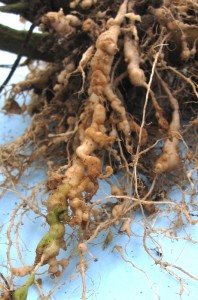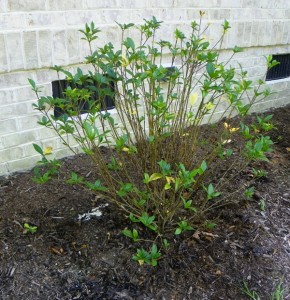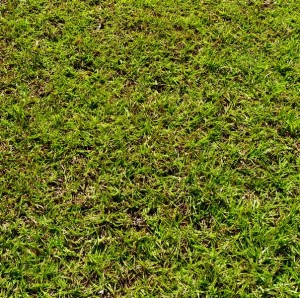What Can I Do About Nematodes?
go.ncsu.edu/readext?180310
en Español / em Português
El inglés es el idioma de control de esta página. En la medida en que haya algún conflicto entre la traducción al inglés y la traducción, el inglés prevalece.
Al hacer clic en el enlace de traducción se activa un servicio de traducción gratuito para convertir la página al español. Al igual que con cualquier traducción por Internet, la conversión no es sensible al contexto y puede que no traduzca el texto en su significado original. NC State Extension no garantiza la exactitud del texto traducido. Por favor, tenga en cuenta que algunas aplicaciones y/o servicios pueden no funcionar como se espera cuando se traducen.
Português
Inglês é o idioma de controle desta página. Na medida que haja algum conflito entre o texto original em Inglês e a tradução, o Inglês prevalece.
Ao clicar no link de tradução, um serviço gratuito de tradução será ativado para converter a página para o Português. Como em qualquer tradução pela internet, a conversão não é sensivel ao contexto e pode não ocorrer a tradução para o significado orginal. O serviço de Extensão da Carolina do Norte (NC State Extension) não garante a exatidão do texto traduzido. Por favor, observe que algumas funções ou serviços podem não funcionar como esperado após a tradução.
English
English is the controlling language of this page. To the extent there is any conflict between the English text and the translation, English controls.
Clicking on the translation link activates a free translation service to convert the page to Spanish. As with any Internet translation, the conversion is not context-sensitive and may not translate the text to its original meaning. NC State Extension does not guarantee the accuracy of the translated text. Please note that some applications and/or services may not function as expected when translated.
Collapse ▲If you garden in sandy soil, there is a good chance nematodes are plaguing your plants, draining them of the energy they need to grow and thrive. Nematodes are tiny, microscopic worms that feed within plant roots. You can think of them as the leeches of the plant world. Several types of nematodes are common in the south, and frequently cause problems in vegetable gardens, lawns and landscapes.
Root Knot Nematodes

Roots of plants infected with root knot nematode are bumpy, swollen, and covered in knot like galls.
The most common plant parasitic nematode found in our area is the root knot nematode. This pest can be a serious problem for most vegetables, causing infected plants to appear stunted and pale, drop flowers and fruits, wilt often, and decline even when plants are generously watered and fertilized. Gardeners most often realize they have root knot nematode at the end of the season, when they are pulling up spent crops and notice multiple bumpy, knot-like swellings on the roots of vegetable plants. There is nothing available that will kill root knot nematodes, but they can be managed to keep levels low enough to successfully grow most vegetables.
One of the easiest ways to reduce nematode levels is to grow crops that are not susceptible to attack. These include sweet corn, asparagus, and cool season crops in the cabbage family, such as broccoli, kale, collards, and mustard. For some crops that are susceptible to nematode attack, resistant varieties are available. For example, many hybrid varieties of tomatoes have been developed with nematode resistance, including ‘Amelia’, ‘Celebrity’ and ‘Better Boy’.
For many other crops resistant varieties are not available. To grow these crops in nematode infested soils gardeners have to rely on other practices to manage nematode levels. A practice gaining in popularity is the use of certain cover crops to reduce nematode populations. One of the most promising is rapeseed, a relative of mustard and canola. When tilled into the soil, decaying leaves from this crop suppress root knot nematode levels.
Rapeseed is seeded in the fall, from late September through late October. Seed should be broadcast across the garden. Plants are left to grow through the winter and tilled into the soil in March. Rapeseed crops have a high sulfur requirement, a nutrient that is commonly deficient in sandy soils. When growing rapeseed for nematode control, be sure to take a sample of your soil to your local Cooperative Extension office for testing to find out if you need to add additional sulfur. If sulfur levels are too low, the rapeseed crop will not be able to generate the organic compounds that suppress nematode populations.
Other practices that reduce root knot nematode levels in vegetable gardens include frequently tilling the soil in the spring and summer to expose nematodes to sun and air, adding compost to the soil, and soil solarization. Gardeners can

Gardenia and other shrubs infected with root knot nematode appear sparse, stunted, and frequently wilt or drop leaves.
solarize their soil by tilling and watering the garden then covering it with clear plastic for several weeks in summer. To keep nematode levels down, gardeners will need to employ as many of these practices as possible every season.
Other plants root knot nematodes will also attack include figs, peaches, gardenia, aucuba, Japanese holly, Japanese boxwood, roses, and dogwoods. It is much more difficult to manage nematodes around permanent plantings and often the best option for landscape beds that have root knot nematodes is to remove infected plants and replace them with species that are resistant.
Sting Nematodes
Several other species of nematodes occur in our area including the sting nematode, a common problem in lawns in sandy soils. Lawns infested with sting nematodes are thin and weak, and do not improve when fertilized or irrigated. Unlike root knot nematodes, sting nematodes do not cause obvious symptoms on plant roots. To determine if these nematodes are causing problems in your yard, you will need to submit soil samples for testing. Early fall is an ideal time to test because that is when nematode levels are highest.

Lawns infected with sting nematodes are sparse, have poor color, and do not improve when watered or fertilized.
Testing for nematodes is similar to testing your soil for nutrients, except nematode testing costs $3. Samples should be collected around living plants that show symptoms of possible nematode infection. Once the sample is collected do not allow it to dry out or get excessively hot. Boxes and forms for packaging samples are available from your local Cooperative Extension office.
Learn More
Learn more about the topics discussed in this article from these great online resources:
- Nematode Testing in NC (NC Dept. of Agriculture)
- Improve Your Garden Soil with Cover Crops (Food Gardener article)
If your local garden center does not carry rapeseed, try ordering online. Johnny’s Seed is one possible source for this crop; Look for Dwarf Essex Rape. Pacific Gold Mustard and Oilseed Radish also have nematode suppressing properties.
Visit your local Cooperative Extension office to learn more about gardening and landscape care. Go to https://www.ces.ncsu.edu/local-county-center/ to find your county Extension center.
- If you live in Pender County, call 910-259-1235
- In New Hanover County, call 910-798-7660
- In Brunswick County, call 910-253-2610
- In Onslow County, call 910-455-5873
- In Duplin County, call 910-296-2143



